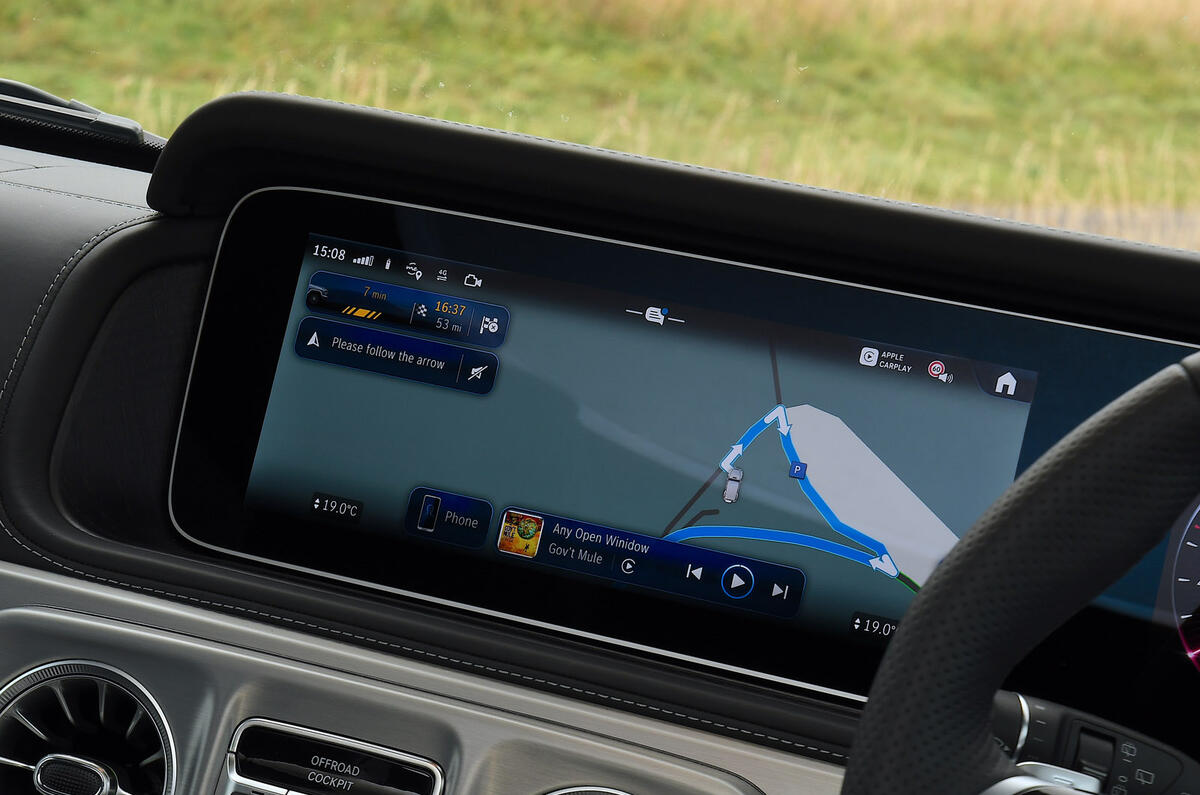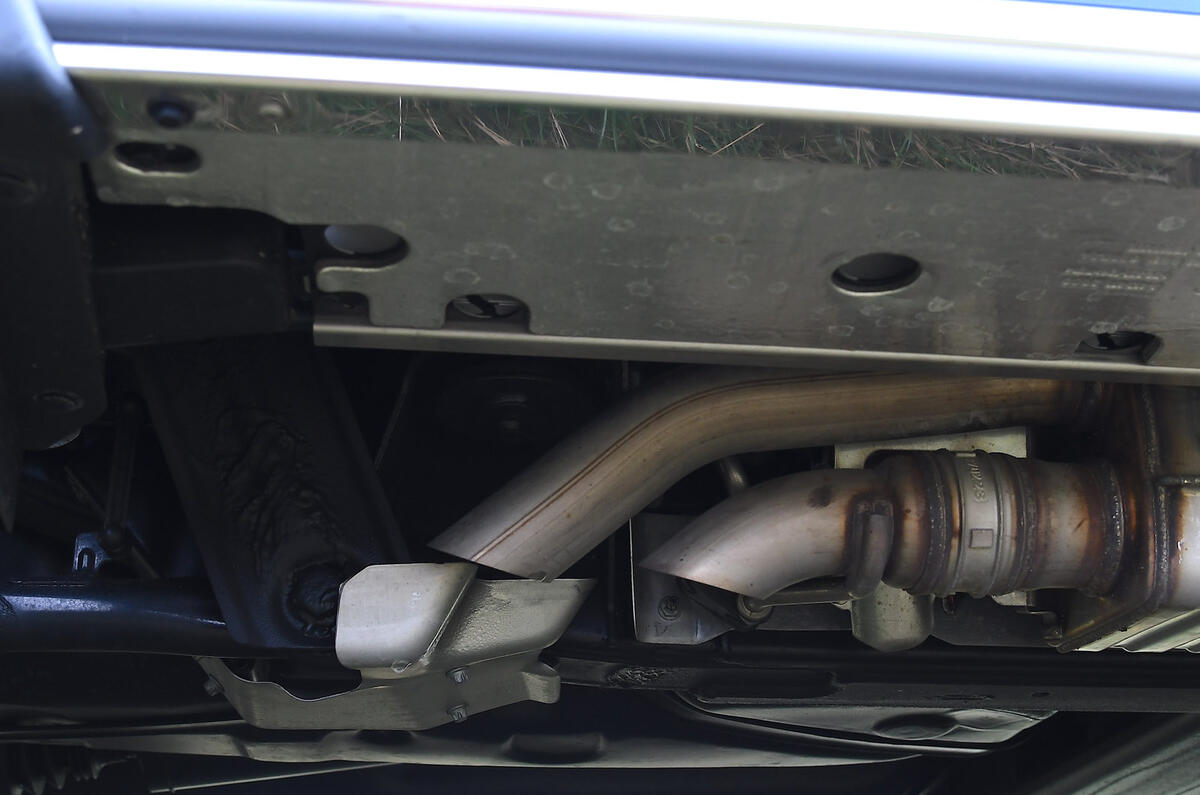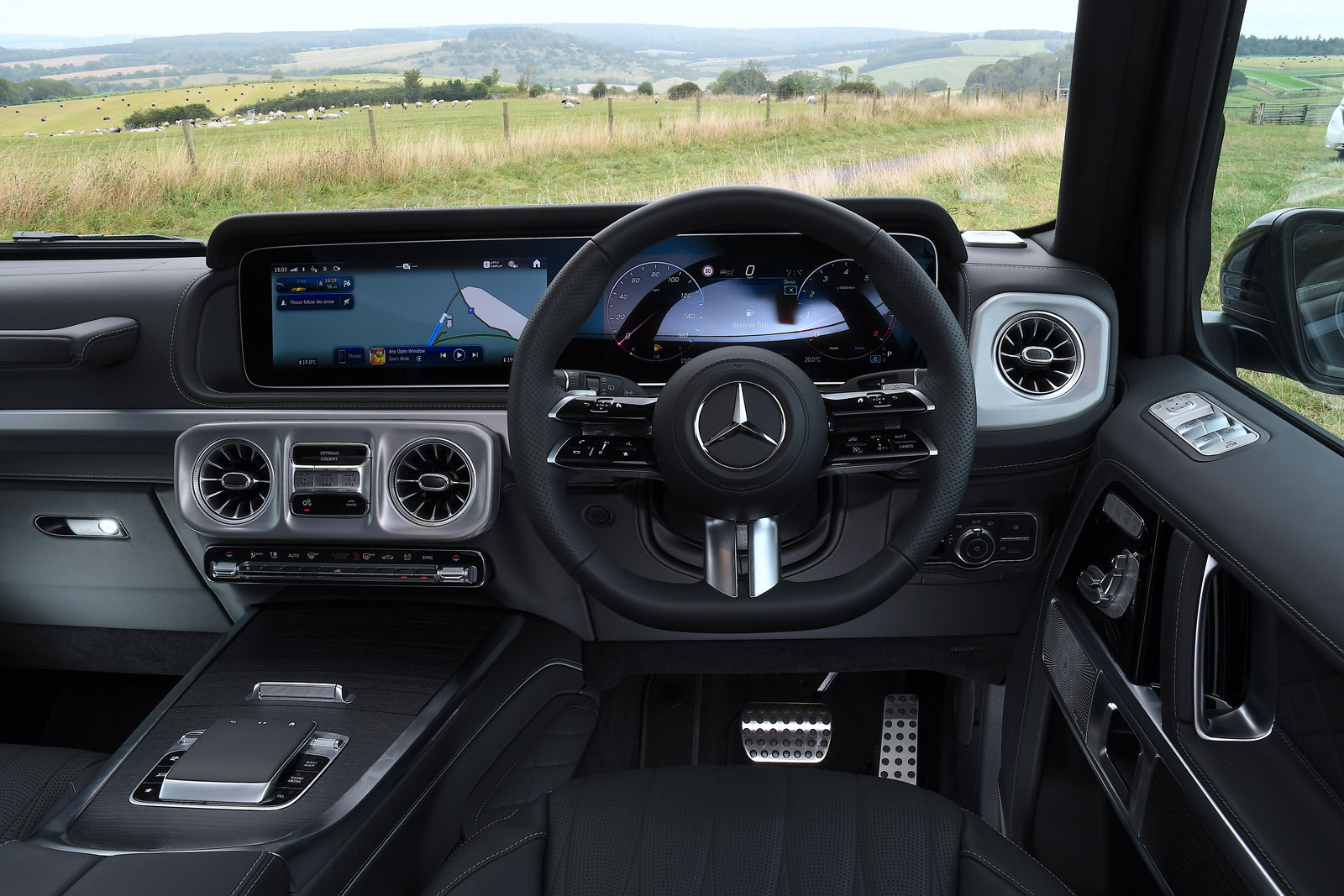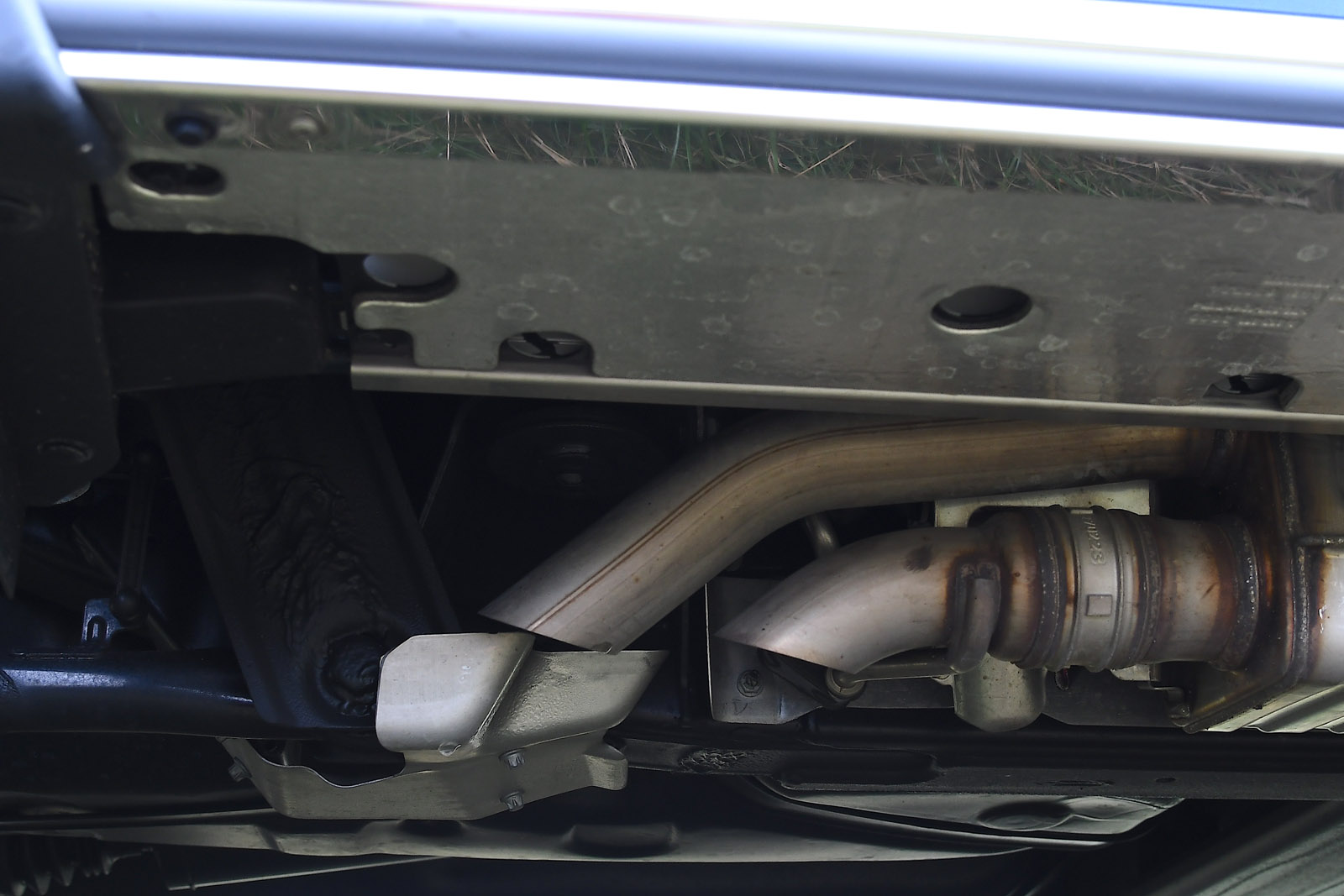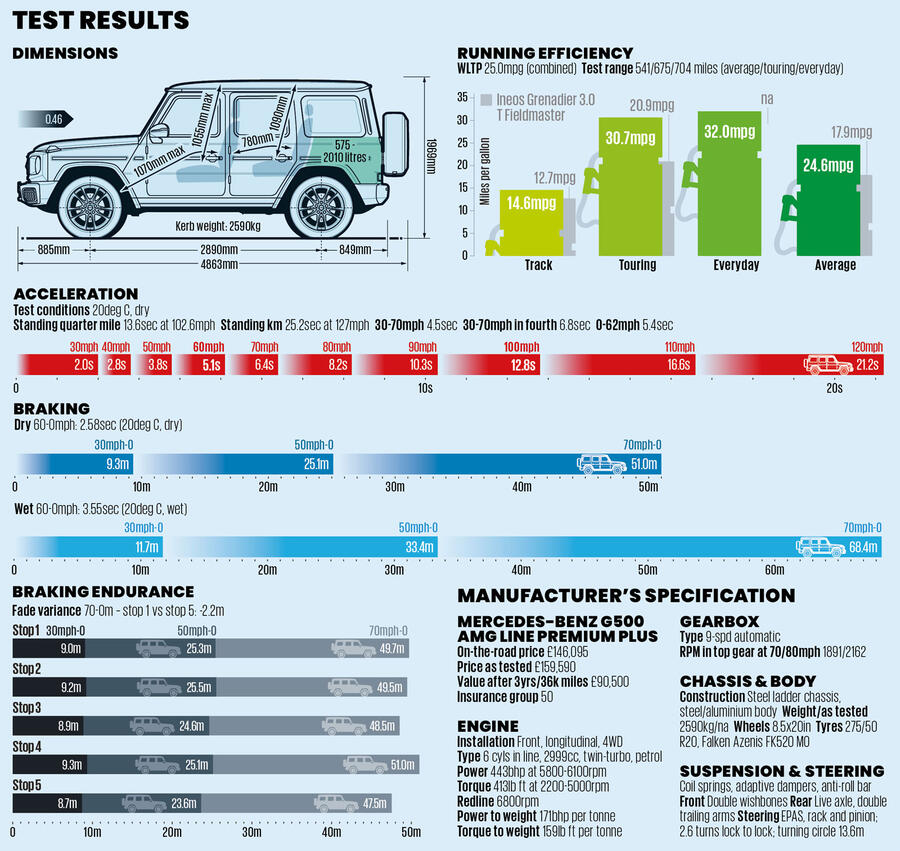You can’t help laughing when you first open the door of a G-Class and get in. If this counts as the car’s handshake, it’s a firm, callused one. There’s no reason for the door’s lock to feel this mechanical, for it to be so tall or to require such a violent slam to close, other than this car being one big piece of automotive theatre.
You sit up very high, with the flat and near-vertical windscreen right in front of your face and looking out over that classic stepped bonnet. Even before you have started the engine, the G-Class experience is an evocative one and unlike that of any other new car. Many will find it all ridiculous, but for others, it begins to justify the high price of admission.
The cabin itself is much more S-Class than it is military vehicle. Where the latest S-Class has gone very screen-heavy, though, the G remains quite traditional and retains a less overbearingly large screen and plenty of chunky physical controls.

The twin 12.3in screens have been updated to run Mercedes’ current MBUX software, which works even better than in other models because the climate controls get their own row of rocker switches, and because the G-Class retains its touchpad and shortcut buttons. The main infotainment is now a touchscreen (it wasn’t previously), but the touchpad is useful for scrolling through lists of settings or songs.
The rest of the interior builds on the G-Class’s sense of indestructibility. The door handles release with a clunk, the passenger-side grab handle that has been a long-time G-Class feature feels as sturdy as ever, and the cover for the centre console cubby has an almost exaggerated heavy-duty action.
There’s quite a lot of adjustability in the front seats, but it feels wrong to set them to their lowest setting. In the G-Class, you want to have that commanding viewpoint. Set up as such, the driving position is closer to that of a kitchen chair than a racing bucket, but very comfortable and more satisfying than the semi-sporting one you get in most crossovers. Rear passengers have more leg room than the number suggests as they can put their feet under the front seats.
Boot space, accessed by the side-hinged rear door, is affected by the G-Class’s construction, making the load bay narrow but tall, with a cross-beam preventing a flat floor.














